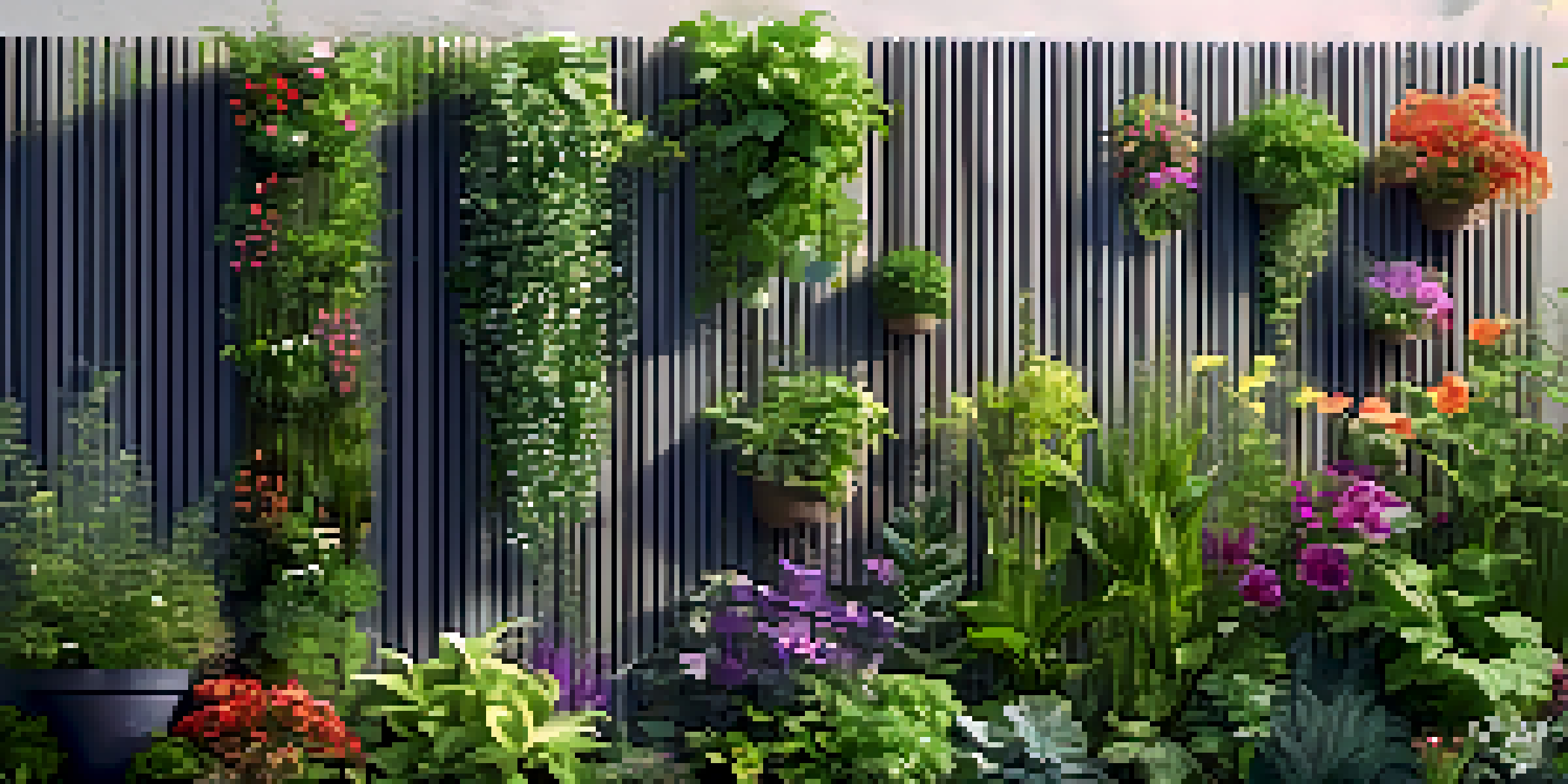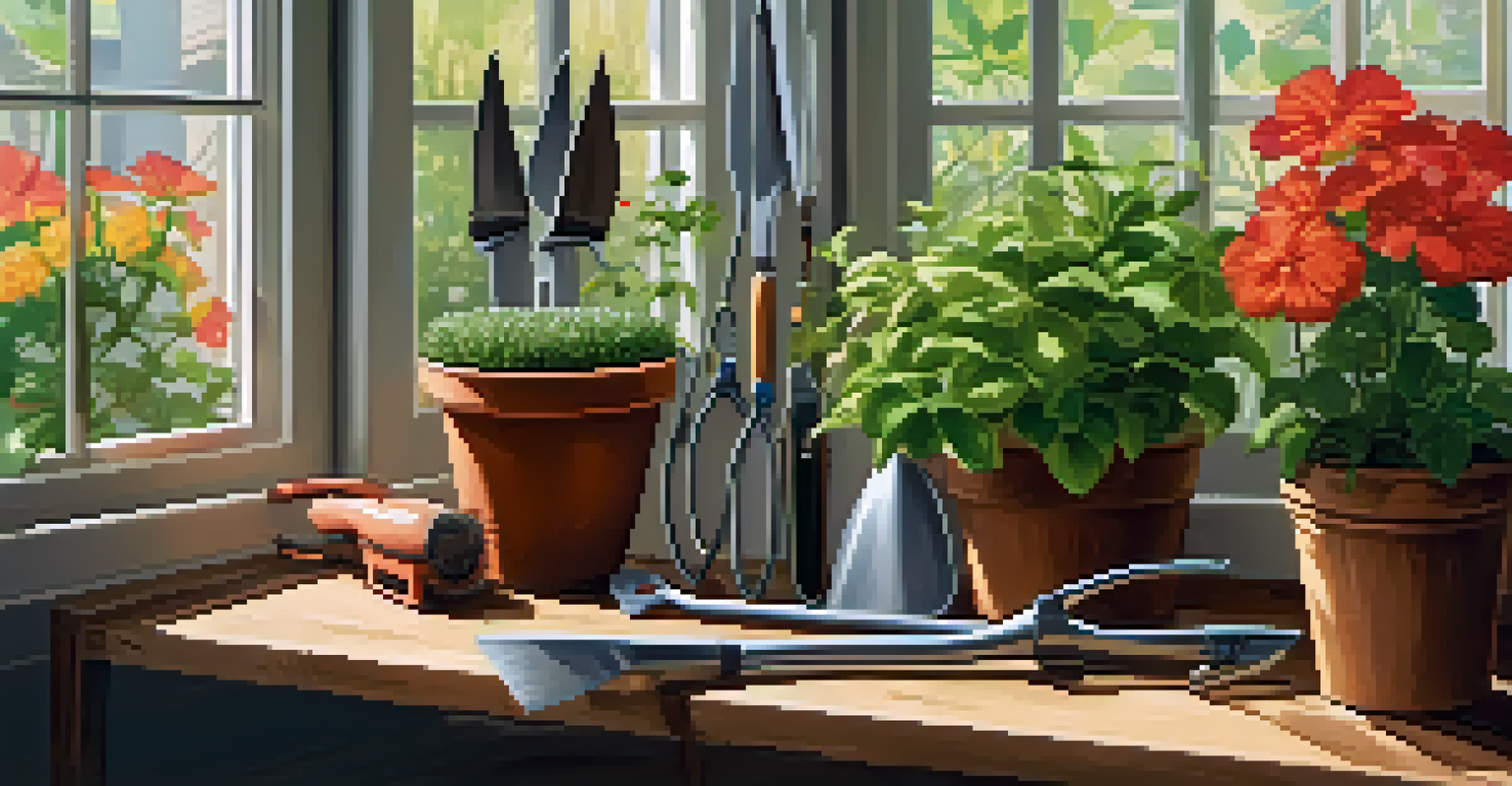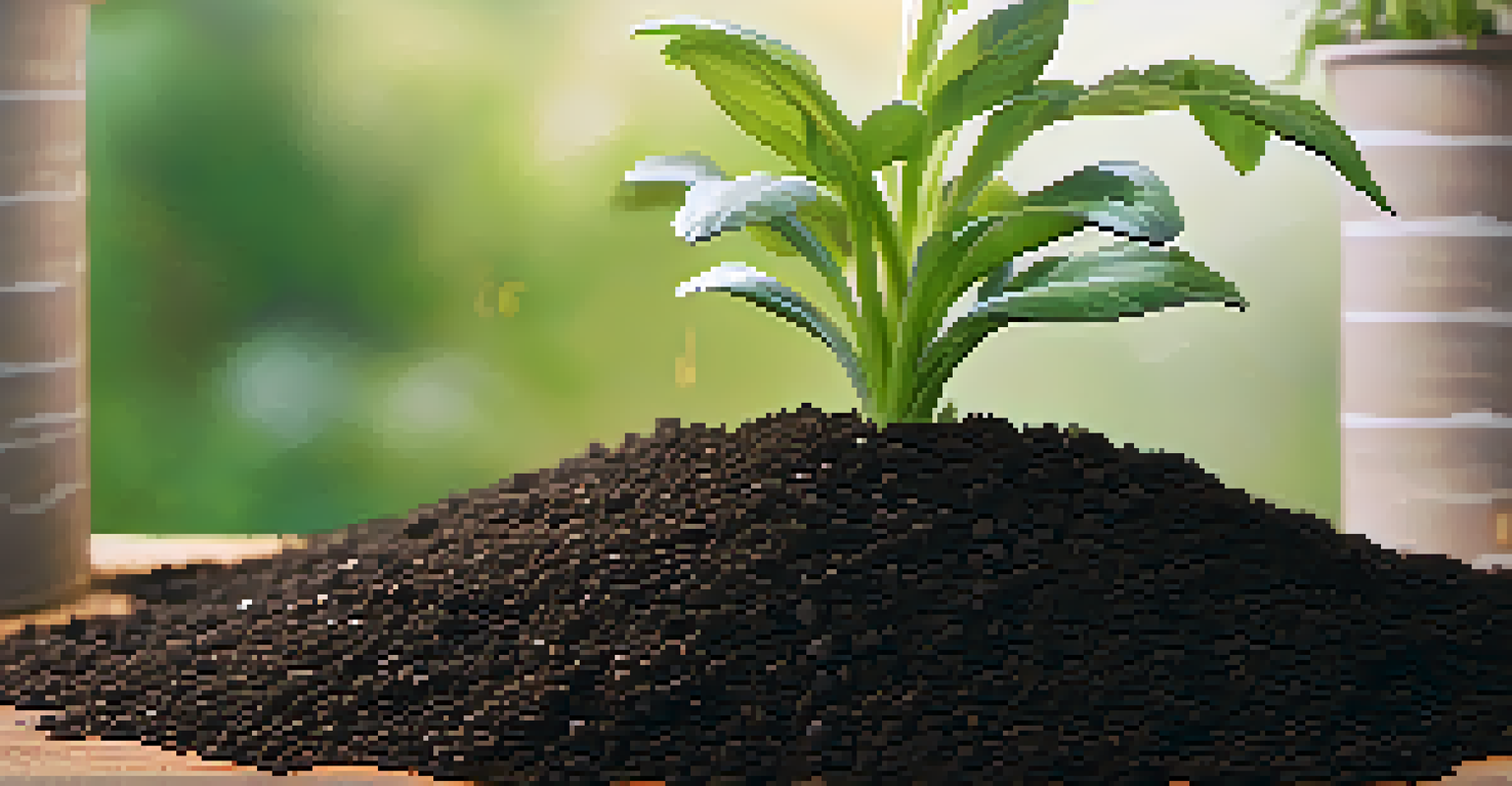Essential Tools for Successful Vertical Gardening Projects

Understanding Vertical Gardening: A Quick Overview
Vertical gardening is a method that allows you to grow plants in a space-efficient manner by utilizing vertical spaces. This style is perfect for urban dwellers or those with limited outdoor space. By stacking or arranging plants upwards, you can create a lush garden without sprawling horizontally.
The best time to plant a tree was twenty years ago. The second best time is now.
The beauty of vertical gardening lies in its versatility. You can grow everything from herbs and vegetables to ornamental plants, making it suitable for various gardening preferences. Not only does this approach maximize space, but it also enhances aesthetics, creating a green wall that breathes life into your surroundings.
As you consider starting your vertical garden, having the right tools can make all the difference. With the right equipment, you can ensure your plants thrive and your gardening experience is enjoyable.
Essential Gardening Tools for Planting and Maintenance
Every gardener needs a basic set of tools, and for vertical gardening, this is no different. A good trowel is essential for digging holes and transplanting seedlings into your vertical systems. Additionally, a pair of pruning shears will help you maintain your plants, ensuring they stay healthy and manageable.

Consider incorporating a hand rake for loosening soil and a watering can with a long spout to reach those hard-to-access plants. These tools not only simplify the gardening process but also make it more enjoyable as you watch your plants flourish.
Maximize Space with Vertical Gardening
Vertical gardening allows you to grow a variety of plants efficiently in limited spaces by utilizing vertical structures.
Investing in quality tools can save you time and effort in the long run. With the right equipment at hand, you'll be well on your way to creating a thriving vertical garden.
Choosing the Right Vertical Planters and Trellises
Vertical planters come in various forms, from wall-mounted pockets to tiered shelves, and choosing the right one is crucial. Ensure that the planter you select is made from durable materials that can handle moisture and weight. This will help prevent any mishaps as your plants grow.
Gardening is not a job, it's a way of life.
Trellises are another key component of vertical gardening, providing support for climbing plants like beans or cucumbers. When selecting a trellis, opt for one that complements your garden's aesthetic while being sturdy enough to support your plants as they reach for the sky.
The right combination of planters and trellises will not only enhance your garden's appearance but also provide the necessary support for your plants. This creates an environment where they can thrive and reach their full potential.
Soil and Fertilizer: The Foundation of Plant Health
Soil choice is vital for any gardening project, especially in vertical gardening where drainage and nutrition are crucial. Opt for a lightweight potting mix that retains moisture but drains well, preventing root rot. This combination helps your plants access nutrients while avoiding waterlogged conditions.
In addition to soil, selecting the right fertilizer can boost your plants’ growth significantly. Organic options like compost tea or worm castings provide essential nutrients without harmful chemicals, making them ideal for edible gardens.
Essential Tools for Successful Gardening
Having the right tools, such as trowels and pruning shears, is crucial for planting and maintaining a thriving vertical garden.
Regularly testing your soil's pH and nutrient levels can help you make informed decisions about fertilization. A healthy foundation means healthier plants, ensuring your vertical garden flourishes.
Irrigation Solutions for Efficient Watering
Watering can become a challenge in vertical gardens, especially when multiple levels are involved. Installing a drip irrigation system can save you time and ensure all plants receive consistent moisture. This system delivers water directly to the roots, minimizing waste and promoting healthier growth.
Alternatively, self-watering planters can be a great option for those who may forget to water regularly. These planters have a reservoir that allows plants to absorb moisture as needed, providing peace of mind for busy gardeners.
Regardless of the method you choose, effective irrigation is essential. Proper watering ensures that your plants thrive and that your vertical garden remains vibrant and lush.
Tools for Pest Control and Plant Health Monitoring
Keeping pests at bay is another critical aspect of maintaining a vertical garden. Tools like insecticidal soap and neem oil are effective natural remedies for controlling common pests like aphids and spider mites. Regularly inspecting your plants will help catch any infestations early, preventing bigger problems down the road.
In addition to pest control, monitoring plant health is essential. A simple magnifying glass can help you identify signs of disease or nutrient deficiency, allowing you to address issues before they escalate.
Sustainable Practices Enhance Gardens
Incorporating sustainable methods, like using recycled materials and companion planting, enriches both your garden and the environment.
Investing in the right pest control tools and monitoring equipment ensures that your plants stay healthy and productive. A proactive approach leads to a flourishing vertical garden.
Harvesting Tools for Your Vertical Garden Bounty
Once your vertical garden begins to flourish, having the right harvesting tools will make the process more enjoyable. A pair of garden gloves will protect your hands as you pick fresh herbs, vegetables, or fruits. Additionally, a small basket or container will come in handy for collecting your harvest.
For larger crops, consider using a garden knife or snips, which can help you cut through stems cleanly without damaging the plants. This promotes regrowth and ensures that your plants continue to produce throughout the season.

Harvesting tools not only enhance your gardening experience but also celebrate the fruits of your labor. Enjoying a fresh salad made from your own vertical garden is one of the greatest rewards!
Creating a Sustainable Vertical Garden Experience
Sustainability is at the heart of modern gardening practices, and vertical gardening offers numerous opportunities for eco-friendly living. By using recycled materials for planters or trellises, you can reduce waste while creating unique garden features. This not only benefits the environment but also adds character to your space.
Consider integrating companion planting strategies to promote biodiversity and reduce pests naturally. By planting compatible species together, you can create a balanced ecosystem that enhances plant health and productivity.
Ultimately, making sustainable choices in your vertical garden not only benefits the environment but enriches your gardening experience. By nurturing a thriving ecosystem, you'll find joy in the balance between nature and nurture.